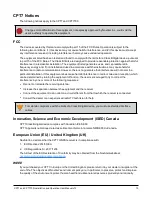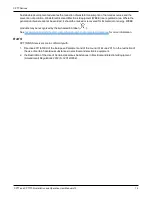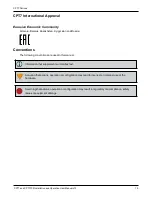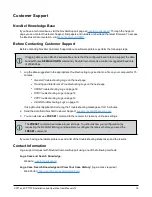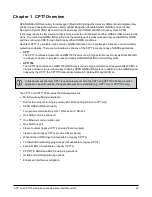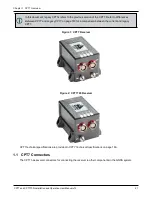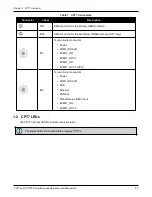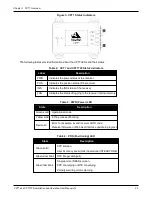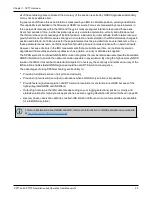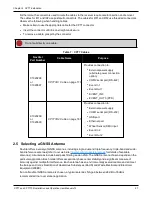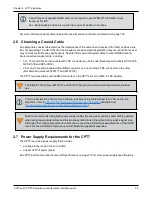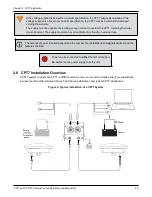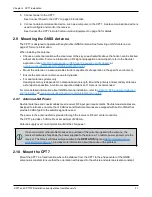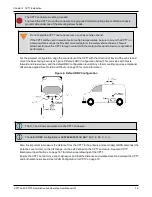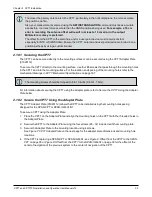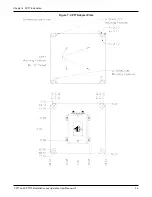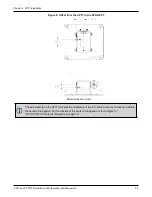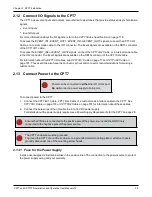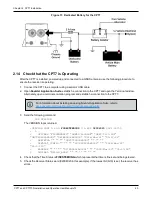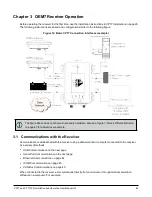
Chapter 2 CPT7 Installation
CPT7 and CPT7700 Installation and Operation User Manual v12
27
Furthermore, the connectors used to mate the cables to the receiver require careful insertion and removal.
The cables for IO1 and IO2 use push/pull connectors. The cables for RF1 and RF2 use threaded connectors.
Observe the following when handling cables.
l
Make certain to use the appropriate cable for the CPT7 connector
l
Insert the connector until it is on straight and secure
l
To remove a cable, grasp it by the connector
Do not pull directly on a cable.
NovAtel
Part Number
Cable Name
Purpose
01020208
or
01020697
Provides connection to:
l
External power supply
(alternate power connection
option)
l
COM2 serial port (RS-422)
l
Event In 1
l
Event Out 1
l
EVENT_IN 3
l
EVENT_OUT 3 (PPS)
01020209
or
01020690
Provides connection to:
l
External power supply
l
COM1 serial port (RS-232)
l
USB port
l
Ethernet port
l
Wheel Sensor (DMI) input
l
Event In 2
l
Event Out 2
Table 7: CPT7 Cables
2.5 Selecting a GNSS Antenna
NovAtel offers a variety of GNSS antennas, including single, dual and triple-frequency, triple-band and wide-
band reference antennas (refer to our web site:
for details of available
antennas). All antennas include band pass filtering and an LNA. The GNSS antenna chosen depends on the
particular application. Each model offers exceptional phase center stability and a significant measure of
immunity against multipath interference. Each antenna has an environmentally sealed radome and all meet
the European Union’s Restriction of Hazardous Substances (RoHS) and Waste Electrical and Electronic
Equipment (WEEE).
If a non-NovAtel GNSS antenna is chosen, a typical antenna LNA gain between 26 dB to 30 dB is
recommended in a rover station application.

